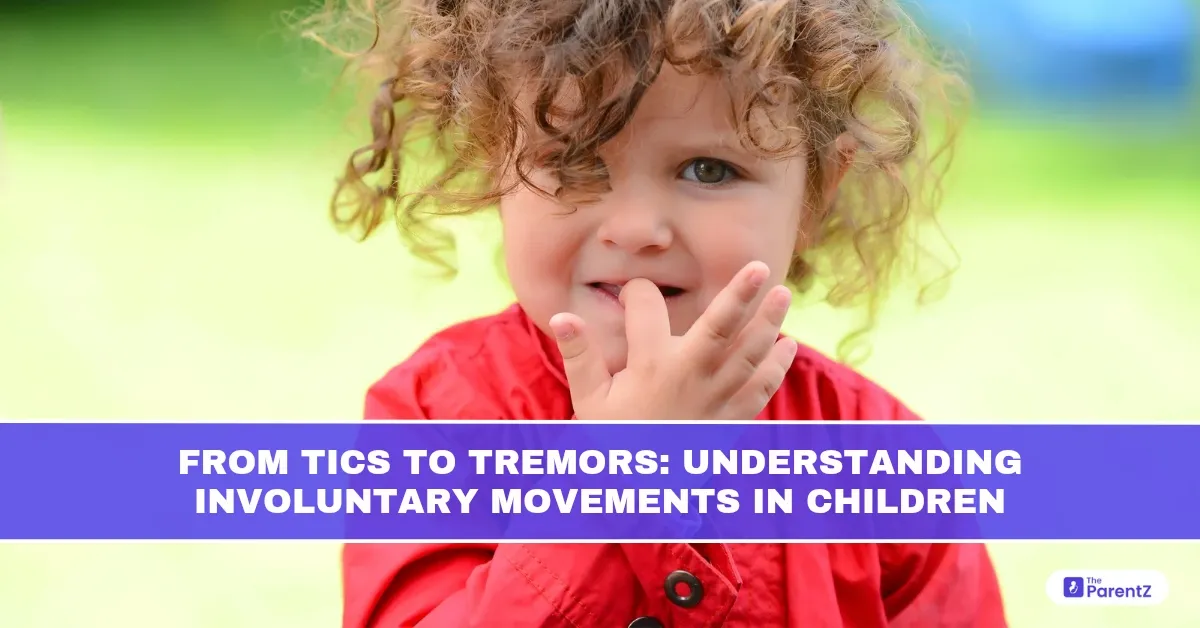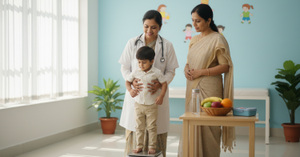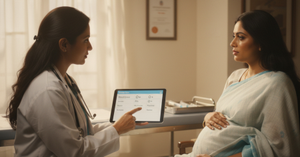It’s not uncommon for children to occasionally blink too often, jerk their arms suddenly, or make strange noises with no clear reason. These involuntary movements can be surprising and sometimes worrying for caregivers. While many such behaviours are harmless or temporary, others may signal underlying neurological concerns that require attention.
What Are Involuntary Movements?
Involuntary movements are those that occur without conscious control. These may be:
- Sudden or repetitive
- Rhythmic or jerky
- Mild or disruptive
- Transient or persistent
They can affect different parts of the body and may come and go or worsen with stress, fatigue, or excitement.
Types of Involuntary Movements in Children
1. Tics
Tics are sudden, repetitive, non-rhythmic movements or vocalizations. They are the most common type of involuntary movement in childhood.
- Motor tics: blinking, facial grimacing, shoulder shrugging
- Vocal tics: throat clearing, grunting, sniffing
Tics often begin between ages 5 and 10 and may change over time. They can worsen with stress or excitement and may temporarily improve with concentration.
Most tics are mild and go away on their own. However, if they persist for over a year or interfere with daily activities, they may be part of a condition like Tourette Syndrome.
2. Tremors
Tremors are rhythmic shaking movements, often seen in the hands. While rare in young children, tremors can occur due to:
- Essential tremor (a familial, often benign condition)
- Cerebellar disorders (affecting coordination)
- Medication side effects
- Metabolic or neurological disorders
Tremors are often more noticeable during certain activities like writing or reaching for objects.
3. Myoclonus
Myoclonus refers to sudden, brief jerks of a muscle or group of muscles.
- Can be benign (such as “sleep starts” when falling asleep)
- Can also indicate neurological disorders like epilepsy or metabolic conditions if frequent or generalized
4. Dystonia
Dystonia involves sustained or repetitive muscle contractions, leading to twisting movements or abnormal postures. It may affect a single body part or be more widespread.
- Can be inherited or acquired due to injury or illness
- May worsen with voluntary movement
5. Chorea and Athetosis
These are less common but important to recognize:
- Chorea: rapid, unpredictable, dance-like movements
- Athetosis: slower, writhing movements often seen in the hands
These may be linked to conditions like Sydenham’s chorea (post-streptococcal), cerebral palsy, or genetic/metabolic disorders.
What Causes Involuntary Movements?
Involuntary movements can arise from a variety of causes:
- Benign developmental phases (e.g., transient tics)
- Neurological disorders (epilepsy, Tourette syndrome, dystonia)
- Genetic conditions
- Infections (such as post-streptococcal chorea)
- Head injury
- Medication side effects
- Metabolic imbalances (like low calcium or magnesium)
- Emotional stress or anxiety
Identifying the cause often involves careful observation, a detailed medical history, and sometimes neurological testing.
When to Observe and When to Act
Not every involuntary movement is a cause for concern. However, parents and caregivers should seek medical attention if:
- Movements persist or worsen over time
- They interfere with the child’s daily life (e.g., writing, walking, speaking)
- There are additional symptoms such as:
- The child is aware of the movements and feels anxious or embarrassed
- There is a family history of neurological or movement disorders
Diagnosis and Evaluation
A pediatric neurologist will typically conduct:
- Detailed medical and developmental history
- Neurological examination
- Video observation (parents may be asked to record episodes)
- Brain imaging (MRI or CT, if needed)
- EEG (to assess brain activity if seizures are suspected)
- Blood tests (to check for metabolic or infectious causes)
- Genetic testing, in select cases
Treatment Options
Treatment depends on the underlying cause and how much the movement affects the child’s quality of life.
For mild, transient tics:
- Often, no treatment is required.
- Parental reassurance, stress reduction, and behavioral support help.
For persistent or disruptive movements:
- Behavioral therapy (e.g., habit reversal training for tics)
- Medications (for Tourette syndrome, epilepsy, or dystonia)
- Physical or occupational therapy (for motor coordination)
- Treatment of underlying conditions (infections, metabolic issues)
Supporting Your Child
Regardless of the diagnosis, emotional support and a calm environment are essential.
- Avoid drawing attention to the movement; this can worsen it.
- Communicate openly with your child in an age-appropriate way.
- Collaborate with schools to ensure teachers understand and support the child’s needs.
- Encourage regular routines, healthy sleep, and physical activity.
Conclusion
Involuntary movements in children can be confusing, but they are often manageable. From simple tics to more complex neurological conditions, early recognition and proper evaluation help ensure the best outcomes. With support, understanding, and, when needed, medical guidance, children experiencing these movements can continue to grow, learn, and thrive with confidence.








Be the first one to comment on this story.